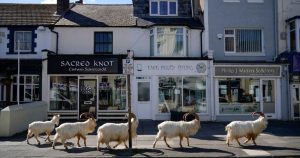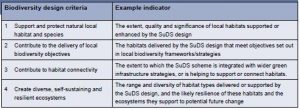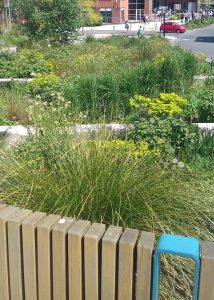Last year was a year that no one could have predicted and with the UK currently well into Lockdown 3.0, and once again being told to ‘Stay Home and Save Lives’ the thing I think none of us will take for granted again is our access to green space.
There were, however, some surprising benefits of lockdown, one of which was the positive effect it had on the environment. What first started as a clear cut in global emissions from space was soon felt in the world around us, as the air began to clear and nature appeared to slowly reclaim some of our urban spaces.
Figure 1: Goats taking over Llandudno during Lockdown 1.0

Source: https://www.cbsnews.com/news/coronavirus-goats-llandudno-wales-empty-streets-lockdown/
But will this continue when our world begins to get back to some normality, and how can drainage play a part in reconnecting us with nature?
Welcome back to the Rennard Consulting Blog where this month we will be focusing on biodiversity and taking a closer look at how drainage can be used to create more habitats for both animals and plants.
So, let’s start with the basics…what is biodiversity and why do we need it?
According to the Natural History Museum (and let’s face it those guys should know), biodiversity is:
“the name we give to the variety of all life on Earth”
(Pavid, 2020)
In simple terms, this covers everything from plants to people and we need biodiversity in our natural world to survive. We rely on nature for almost everything we do, whether it is the streams and rivers which supply the water we drink, the range of natural resources required to build our homes or the various animals and plant life we use for food.
It may come as no surprise, then, that when one area is disrupted it can have a major impact on humanity as a whole (think of the lettuce shortage of 2018 but much, much worse).
But what has this got to do with drainage?
Well, if you have been following my blog posts for some time you may have heard me mention Sustainable Urban Drainage or SuDS ( just once or twice).
SuDS aim to recreate the natural runoff profile of rainfall, however, good designs can also help to create new habitats or make existing ones even better. They can provide shelter for animals, offer a source of food for insects and mammals as well as generate that all-important opportunity to connect people with nature.
What are the best SuDS to use if we want to enhance biodiversity on our projects?
If you are looking to improve your biodiversity credentials the best SuDS to use are the ones which meet the Biodiversity Design Criteria, set out in Chapter 6 of the CIRIA SuDS Manual an extract of which is included in Figure 2 below.
Figure 2: Biodiversity Design Criteria

Source: Table 6.1 of the CIRIA SuDS Manual
In summary, any system which increases the ‘green’ or ‘blue’ surface area and provides increased opportunities for wildlife can be considered, including, but not limited to:
- Ponds;
- Swales;
- Green Roofs;
- Wetlands;
- Tree pits; and
- Raingardens
For a successful scheme, it is vital that the drainage engineer coordinates with the ecologists, urban and landscape architects, and the planners to ensure a consistent approach and that the maximum benefits are achieved on the project.
Case Study – Grey to Green
It may come as a surprise that one of my favourite SuDS projects is located in the Steel City…Sheffield. I was lucky enough when we could attend live events, to be offered a tour of this amazing scheme by some of the designers in 2019 as part of the SuDSsource conference.
I have popped a link to a great case study produced by the guys at Susdrain:
In summary, however, the Grey to Green project transformed the Riverside Business District to create a great environment for people to live and work. It did this by installing 25 planted swales over a length of approximately 0.7km which included an array of planting and trees as well as seating areas, and on the lovely sunny day when I visited the area was bustling.
Figure 3: Sheffield Grey to Green

Source: Site Photo
Feedback for the scheme has been positive and if you are ever in the City it is well worth a visit.
Summary
In summary, we are all starting to get an appreciation on why it is important to protect biodiversity and promote it through our projects and in this blog, we have seen how drainage can also play its part.
Our next blog will be out in two weeks and will provide an overview of the Biodiversity Net Gain Legislation which came out last year and will look at how it could impact your project. If you cannot wait until then, however, feel free to get in touch using the details on the contact page as we would love to have a chat.
References
CIRIA. (2015). The SuDS Manaul. CIRIA.
Pavid, K. (2020, May 22). What is biodiversity? . Retrieved from Natural History Museum: https://www.nhm.ac.uk/discover/what-is-biodiversity.html